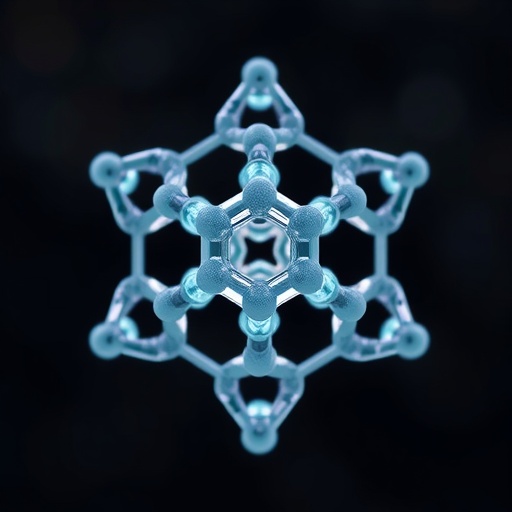The study of crystal structures in organic molecules has long been a key focus in fields ranging from pharmaceuticals to advanced materials engineering. The ability to accurately predict these structures is crucial, as variations in crystal arrangements dramatically affect the physical properties of substances, including solubility and stability. However, the inherent complexity in predicting crystal structures—especially for organic compounds—has led researchers to seek innovative solutions to enhance this process. A pioneering development comes from a research team led by Associate Professor Takuya Taniguchi at Waseda University, who introduced a cutting-edge workflow known as SPaDe-CSP, designed to improve the speed and reliability of crystal structure prediction.
The crystal structure prediction (CSP) process traditionally comprises two main stages: structure exploration and structure relaxation. In the exploration phase, a multitude of potential structures is generated, often leveraging random generation methods, while the relaxation phase seeks to refine these structures to identify stable configurations through energy minimization techniques. Notably, the random generation approach tends to yield numerous unstable and low-density structures. Conventional methods founded on density functional theory (DFT), used for structure relaxation, demand substantial computational resources and time, creating barriers to effective predictive modeling.
The SPaDe-CSP workflow aims to circumvent these traditional limitations by utilizing machine learning (ML) techniques to first predict probable space groups and crystal densities before engaging in the more computationally expensive phase of structure relaxation. By filtering out less viable candidates in advance, the researchers have created a streamlined pathway that enhances the efficiency of crystal structure prediction. This innovative approach allows scientists to focus computational efforts only on the most promising candidates, significantly accelerating the overall process.
The development of SPaDe-CSP involved utilizing data from the Cambridge Structural Database (CSD), an extensive repository of crystallographic data. The researchers compiled a dataset comprising 32 different space group candidates with over 169,000 data entries. By employing MACCSKeys as the molecular fingerprint and LightGBM as the predictive model function, the team could generate accurate predictions, swiftly narrowing the search space for organic crystal candidates. Furthermore, they leveraged advanced interpretive techniques utilizing Shapley additive explanations (SHAP) analysis, identifying crucial structural characteristics that contribute to effective predictions.
After refining their machine learning models, the researchers proceeded to a lattice sampling phase. This stage produced unrelaxed structures that were subsequently subjected to structure relaxation through an efficient neural network potential (NNP) that had been pretrained on DFT data. This two-step approach not only improves the accuracy of structure prediction but also generates detailed energy density diagrams indicative of the target molecule’s potential configurations. As a result, SPaDe-CSP can effectively produce reliable predictive outcomes while reducing the computational burden.
The researchers rigorously tested their workflow on both a model molecule sourced from the CSD dataset and 20 diverse organic molecules, ensuring the methodology’s generalizability. The results were not only validated against existing experimental crystal structures but were also benchmarked against traditional random-CSP outcomes. The findings revealed that the success of crystal structure prediction is positively correlated with specific hyperparameters, notably a higher probability threshold for filtering space groups and a narrower crystal density tolerance window.
Remarkably, the results indicated that SPaDe-CSP achieved a successful prediction rate for 80% of the tested compounds—twice the success rate compared to random-CSP methods. Importantly, the researchers identified a critical structural descriptor that showed a linear relationship with the success rate, highlighting the intricate interplay between molecular and crystal-level features in determining successful outcomes in crystal structure prediction.
The implications of such advancements are profound, particularly in the realms of pharmaceuticals and material science. Taniguchi indicates that the SPaDe-CSP strategy can revolutionize the pipeline for discovering and designing new molecules. This innovation stands to enhance the identification of the most stable and effective crystal forms of new drugs—critical factors influencing drug solubility, shelf life, and overall therapeutic effectiveness. Moreover, the potential for computational screening of new functional materials with optimized electronic properties could reshape entire industries, accelerating the development of next-generation technologies.
In summary, the introduction of SPaDe-CSP represents a significant leap forward in crystal structure prediction methodologies, effectively combining the powers of machine learning with traditional computational techniques. By making the process faster, more reliable, and more economically feasible, this breakthrough holds the promise of advancing not only scientific research but also practical applications in healthcare and material innovation. This study not only sheds light on the potential for applied computational techniques in complex scientific problems but also accentuates the importance of interdisciplinary approaches to solving today’s pressing challenges.
Through this innovative workflow, Associate Professor Takuya Taniguchi and his team at Waseda University are not just offering a glimpse into the future of crystal structure prediction but also laying down a foundational tool that could prove invaluable in tackling some of the most critical needs in drug discovery and materials development.
Subject of Research: Crystal structure prediction in organic molecules
Article Title: Crystal structure prediction of organic molecules by machine learning-based lattice sampling and structure relaxation
News Publication Date: 13-Oct-2025
Web References: https://pubs.rsc.org/en/content/articlelanding/2025/dd/d5dd00304k
References: DOI: 10.1039/d5dd00304k
Image Credits: Credit: Takuya Taniguchi from Waseda University
Keywords
Crystal structure prediction, machine learning, organic molecules, computational materials science, neural network potential, pharmaceutical design, data science, structure exploration, energy minimization.




